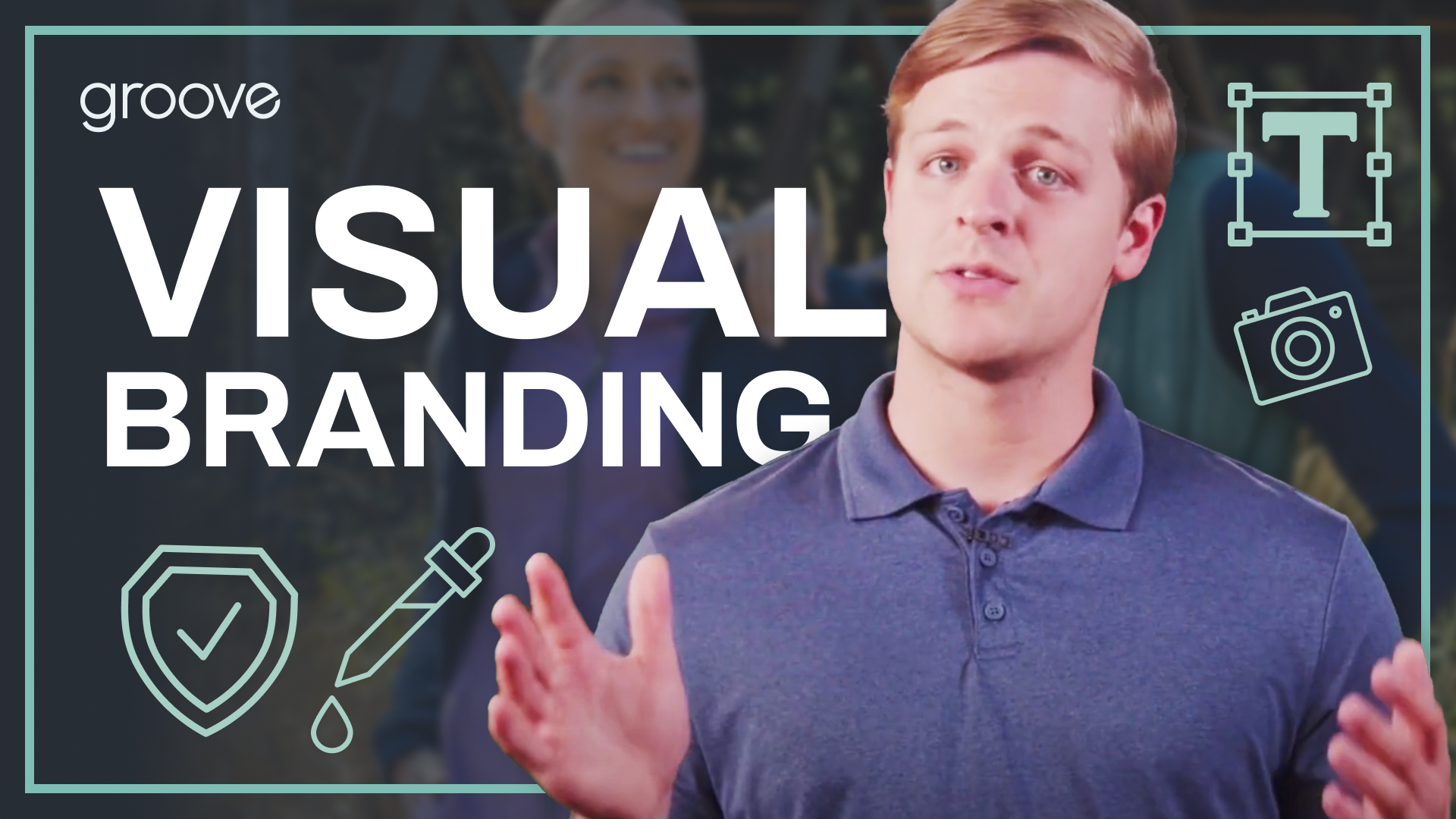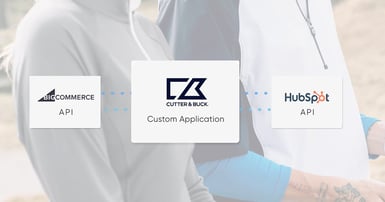Online stores need to catch our attention and be memorable in order to stand out. One big way they do this is through visual branding.
So, what is it and why is it important?
What's Visual Branding?
In an eCommerce context, visual branding is a brand's unique style or online look. It includes assets like the company logo, the colors they use, the type of pictures they show, and even the fonts they choose. Every little detail tells us a bit about the company and what they stand for.
Visual branding is like an eCommerce merchant’s storefront window. It's the first thing we see and feel when we visit a site. If done right, it makes us want to step in (click or tap in) and shop.
Why is Visual Branding Important for Online Shops?
With so many online stores out there, being different is a must. The way a store looks can make a big difference. Before reading about a product or checking its price, we see the store's design. That first look can make or break our shopping experience.
Good visual branding doesn't just make a store look good. It makes people feel good about shopping there. It builds a connection with visitors that converts them into repeat customers with higher customer lifetime values (CLTV). Knowingly or unknowingly, when people love a brand's look and feel, they're more likely to tell their friends about it.
In a world where consumers have too many options and too little time, how a brand presents itself matters - a lot. It's not just about catching the eye for a moment; it's about maintaining relevance in the buyer’s mind. As we go on, I’ll share more about the individual elements that create a great visual branding package. From the importance of a good logo to the feelings certain colors can give, we'll learn how they all play a part in making a brand shine online.
Understanding the Elements of Visual Branding
Visual branding might sound fancy, but it's important to remember that the term is really about the bits and pieces that come together to show off a brand's personality online.
Let’s break it down.
Logo Design: Your Brand’s Face
Think of your logo as the face of your online store. It's often the first thing people see, and it sticks in their minds. When possible, a great logo tells a story about the brand. For instance, a playful logo might belong to a kids' toy store, while a sleek one could be for a high-end consumer electronics store.
A logo isn't just a pretty picture. It should show what the store stands for, such as its values or what it offers. Most importantly, it needs to be simple enough for people to remember.
Colors and Feelings: More Than Just Eye-Candy
Colors aren't just for decoration; they make people feel things. For example, blue can be calming, red might feel exciting, and green can make people think of nature. Online stores use colors to create the right mood for their customers.
Choosing the right colors is important because it helps tell the brand's story. It's like setting the mood with lighting in a room. The colors an online store chooses will influence how customers feel about their products which will ultimately influence if they decide to buy.
Fonts Speak Louder Than Words (Typography)
Have you ever contemplated how different fonts can give you unique feelings while reading? Consider the differences between Helvetica and Comic Sans, two fonts that stir strong reactions in the world of eCommerce.
Helvetica, known for its clean and modern appearance, exudes professionalism and simplicity. Often utilized by leading brands and corporate entities, it's a favorite for brands looking to create an impression of efficiency and reliability.
On the other hand, Comic Sans, with its informal and whimsical appearance, is almost never the correct choice for brands aiming to connect with audiences, even in a goofy and playful manner.
The role of typography in an online store goes far beyond mere style; it's also about ensuring readability. Choosing a font that embodies your brand's spirit but is also easy to read is a key factor to success. If customers can't engage with what's on your site comfortably, they might leave, feeling disoriented.
Picture’s Worth a Thousand Clicks
Online, where customers can't touch or try products, pictures are super important. Clear, high-quality photos can make a big difference. They show off the product and give customers a better idea of what they're getting.
Using photos of people using or wearing products can also help. Imagine your ideal customer profile (ICP) and create product photography for that group. It’s important to offer variety in the models you show, but your store’s visual branding should always shine through. Done correctly, customers can picture themselves with the product, resulting in conversion rate optimization (CRO).
Consistency in Visual Branding
Having a consistent visual identity is a must for brands. Think of global giants like Coca-Cola, Apple, or Nike. Regardless of where you are in the world, their branding remains unmistakably theirs.
Let’s delve deeper into the why of maintaining consistent branding across your website and beyond while taking cues from some of the world's most successful brands.
Why Stick to One Style? A Brand Style Guide
Let's look at Apple, a company synonymous with sleek design and innovation.
Whether it's an iPhone box, a website banner, or a product ad, Apple’s minimalist aesthetic and distinct typography remain constant. This is because they have an exceptional brand style guide.
A brand style guide is like a brand's visual blueprint. It lays out the rules—from the exact HEX code of colors to correct logo sizes. For brands, this guide ensures that whether a customer is in New York or Tokyo, they experience the same Apple or Coca-Cola. It's not just about colors or logos; it's about maintaining the brand's essence.
The Same Look Everywhere: From Website to Social Media
Now let's think of McDonald's. Those iconic golden arches with a red background are instantly recognizable. Whether you're driving past a billboard, browsing their website, or scrolling through social media, the visual branding remains consistent. This consistency assures customers of the same quality and experience (if you can call it that) that they've come to expect from the brand, no matter where.
Coca-Cola is another example. Their signature red color and classic script font are consistent across platforms. So, when you see that red can or bottle with the white script, even without reading the name, you know it's a Coca-Cola.
The Role of Consistency in Trust
Consistency builds trust. It signals to customers that a brand is stable, reliable, and dependable. If a brand can maintain its visual identity over years or even decades, it sends a message: "We're here to stay, and we're committed to quality."
Nike’s iconic "Just Do It" slogan and the unmistakable swoosh logo haven't changed much over the years. This consistency in branding has cemented its position as a reliable and top-tier athletic brand in customers' minds. When people see that swoosh, they think of quality, durability, and style.
Building Trust through Visual Branding
For eCommerce brands with a focus on customer retention and CLTV, trust is the currency. Visual cues often serve as the foundation for this trust. Brands like Apple, Samsung, and Levi's have mastered the art of using visual branding to convey reliability and authenticity.
The Deep Connection Between Visuals and Trustworthiness
Ever stopped to wonder why the sight of Apple's minimalist design or the classic Levi's tag evokes a sense of trust? It's the result of long-term consistent and professional visual branding. Every touchpoint – be it a product, advertisement, or website – showcases the same visual style and quality, underscoring the brand's commitment to consistency and excellence.
Brands that showcase a polished, coherent visual identity send a message: they value quality and customer experience. Samsung, with its sleek product designs and unified color schemes across advertisements and interfaces, consistently emphasizes innovation and quality. Over time, these visual signals, repeated consistently, build a strong sense of trust among customers.
Visuals as a Beacon of Product Quality and Authenticity
High-resolution product images, authentic customer reviews with real-life photos, and behind-the-scenes snapshots can greatly influence a shopper's decision. When browsing online, the inability to physically touch or try products makes these visuals crucial.
Take Levi's, for instance. Their website doesn't just display jeans; it showcases the texture, the fit on real models, and often includes videos of the jeans in motion. Such detailed visuals communicate the brand's transparency and confidence in its product quality.
The idea is clear: "We have nothing to hide, and we're proud of our products."
Additionally, brands that use real customer photos or candid, unfiltered images bolster their authenticity. It assures potential buyers that what they see is what they'll get. Authentic visuals, in a way, bridge the gap between online shopping and the traditional brick-and-mortar experience.
The Role of Visual Branding in Website Design
In today's digital age, a website is often the first point of contact between a brand and its potential customers. Giants like Amazon, Airbnb, and Spotify have set benchmarks in website design, integrating their visual branding seamlessly to create immersive experiences. The fusion of design elements with brand identity in their web interfaces is both an art and a strategy.
Here's how we believe visual branding mingles with website design to create a complete experience.
How Visuals Shape User Experience (UX)
Every time you land on the Airbnb app, you're not just presented with rental listings but with stories of the homes you’re browsing. The mesmerizing photographs of exotic locations, paired with inviting fonts, don't just display accommodations; they promise unique experiences and adventures. Such strategic use of visuals stirs specific emotions, guiding users towards a desired action, like booking a stay.
Visual elements are the backbone of the user experience. A mismatched color scheme or jarring graphics can disorient users, leading them to abandon the website prematurely. Conversely, well-chosen visuals that resonate with the brand's essence can keep users engaged, enhancing their journey on the site. Distinct visual branding doesn't merely serve content; it immerses users in a sensory-rich musical narrative.
Incorporating Branding into Website Elements
It’s all in the details – and Amazon understands this. Beyond the evident black and orange hues, if you pay close attention, you'll see their visual branding subtly infused in every corner of their platform. From the cart icon to the specific shade of button hover effects, every element is meticulously branded. This detailed incorporation not only reinforces brand recall but also builds a sense of reliability.
When every element of a website, down to the seemingly minute details, aligns with a brand's visual identity, it weaves a continuous narrative. This narrative, in turn, guides and reassures users, making them more inclined to engage. It's not just about aesthetics; it's about strategically leading users through a journey, making each interaction intuitive and brand-centric.
With these foundations in place, brands don't just attract visitors to their sites – they invite them into a well-crafted, visually consistent story, ensuring they stay, explore, and engage.

E-BOOK
20 Best Shopify Apps For Your eCommerce Store
Explore tags:
About the author
Subscribe to the Groove Newsletter
Get the latest updates and insights straight to your inbox





